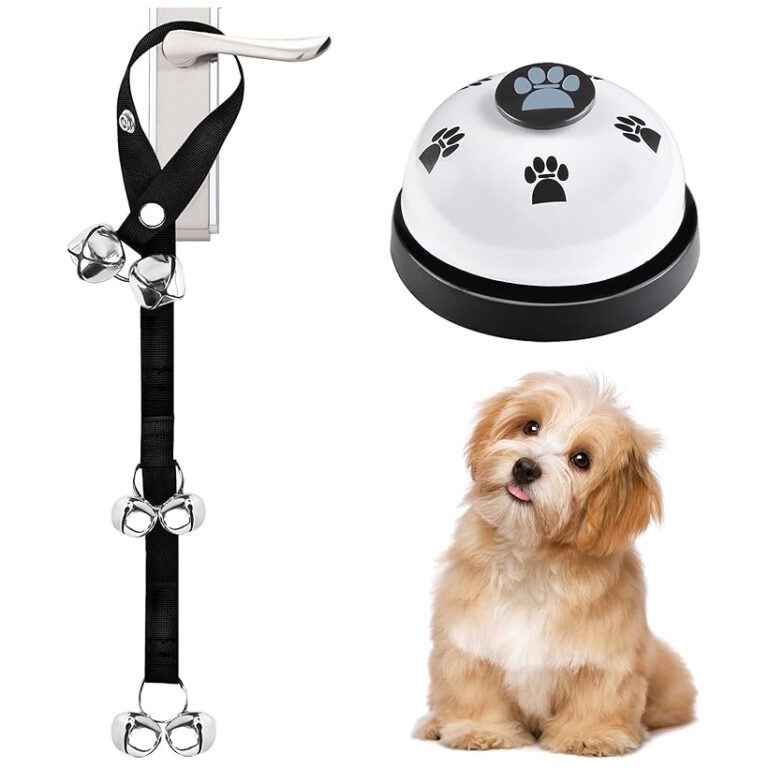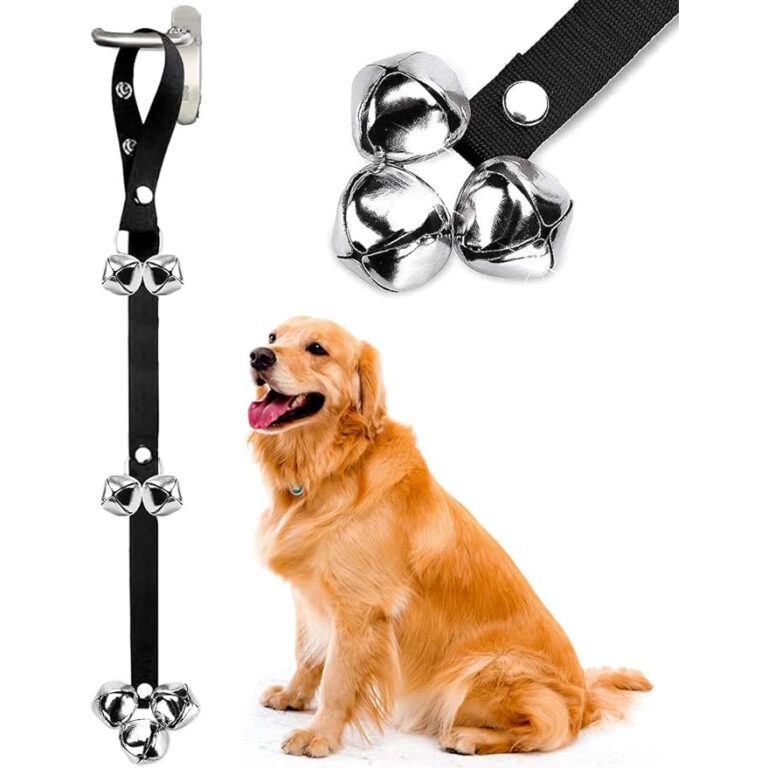Are you a new pet parent, or perhaps you’re on the quest to fine-tune your dog’s potty routine? If so, you might have heard about using dog bells as a potty training aid. This unobtrusive tool has been a game-changer for many dog owners, making communication with their pets clear and simple. Here’s your complete guide to understanding, selecting, and effectively using dog bells for the smoothest potty training experience.
When it comes to potty training, patience and consistency are key. And what if we told you there’s a tool that not only helps reinforce good potty behavior but also strengthens the communication between you and your furry friend? Dog bells do just that, by teaching your pup to give a signal when they need to go outside to do their business.
Top 6 Dog Training Bells
ChunHee Dog Bell for Potty Training – Wireless
BLUETREE Dog Doorbells – Training Potty
The "Ringing" Endorsement of Dog Bells
Dog bells for potty training are a straightforward concept. A set typically consists of a line of bells that you hang from the doorknob of the door your dog uses to go outside. You train your dog to nudge or hit the bells with their nose or paw to raise an alert when nature calls.
Can Every Dog Learn to Use Dog Bells?
In theory, any dog can be trained to use dog bells. Dogs are intelligent creatures, and with the right incentive and training, they can pick up on the connection between the bell and the door opening to the outside world where they’re supposed to relieve themselves.
However, it’s essential to note that like humans, every dog is different. While some dogs may grasp the concept in a few days, others may take a bit longer. Patience, positive reinforcement, and a step-by-step training plan are crucial.
Why Use Dog Bells for Potty Training?
Dog bells offer several benefits for both you and your pet:
- Communication: The bell provides a clear signal of your dog’s need to go outside. Especially for dogs who aren’t vocally expressive, this can be a vital communication tool.
- Independence: Your dog learns to initiate the potty break, reducing the guesswork for you and empowering your dog with a bit of independence.
- Prevention of Accidents: With the bells, you can be more proactive about taking your dog out, which reduces the likelihood of indoor accidents.
- Mental Stimulation: The training process offers mental stimulation, which is as important as physical exercise for your pet’s well-being.
Selecting the Right Set of Dog Bells
Choosing the right dog bell set is the foundation of successful training. Here’s what you need to consider:
✤ Design and Durability
The bells should be sturdy enough to withstand repeated use from your dog. Look for a design that’s not only durable but also suitable for your dog’s size and strength. Bells that are too loud or difficult to ring might discourage your pooch, while bells that are too quiet may go unnoticed.
✤ Adjustability
Adjustable straps are a plus, allowing you to hang the bells at the perfect height for your dog to reach comfortably. This adaptability is especially handy as your puppy grows or if you have multiple dogs of varying sizes.
✤ Visibility and Safety
Opt for bells that are distinct in color and design, ensuring visibility for your dog. Additionally, consider the safety of the materials, especially if your dog is prone to chewing on objects.
How to Train Your Dog to Use the Bells
Introducing the bells is a gradual process. Here’s a step-by-step training plan:
Stage 1 – Bell Introduction
Begin by showing your dog the bell. Ring it in front of them and use a phrase like “outside” or “potty” to help them recognize the action.
Stage 2 – Making the Connection
Each time you take your dog out for a potty break, guide their nose or paw to the bell and ring it. Repeat the ‘bell-ringing’ action with the ‘potty’ cue until your dog starts associating the bell with going outside.
Stage 3 – Independent Ringing
Encourage solo bell ringing by prompting your dog to ring the bell just before you open the door to take them out. Praise and reward them when they do so.
Stage 4 – Consistent Cues
Establish a consistent routine and use the bell and potty commands every time you go out. Be patient, as independent and consistent bell-ringing can take a few weeks to become a habit.
Tips for Effective Use
For the training to be most effective, keep these tips in mind:
✓ Consistency Is Key – Apply consistency to all aspects of the training, from the command you use to the timing and the reinforcement of good behavior. The more consistent you are, the quicker and more effectively your dog will learn.
✓ The Right Reward – A reward that really motivates your pet is essential. This could be a tasty treat, a favorite toy, or lots of praise and affection. Find out what your dog loves and use it as an incentive.
✓ Timing Is Everything – Use the bell immediately before you take your dog out. The stronger the connection between ringing the bell and going outside, the better your dog will understand the concept.
Troubleshooting Common Issues
Even with the best planning, hiccups can happen. Here’s how to address common training challenges:
No Interest in Bells
If your dog seems disinterested in the bells, make the training more engaging. Try to make the process more fun by incorporating play into the training.
Excessive Barking or Bell-Ringing
Some dogs might bark at the bells or use them as a playful toy. To deter this behavior, ignore your dog when they ring the bell without the intent to go out, and redirect their energy to a quiet command such as “sit” or “down.”
Accidents Continue Indoors
If your dog continues to have accidents indoors, you may need to reset the training by going back a step and reinforcing the association between the bell and going out more regularly.
When to Ditch the Bells
The ultimate goal is to wean your dog off the bells when they can effectively communicate their need to go out. You can start by intermittently taking the bells down and observing if your dog approaches the door when they need to go out. Over time, as your dog becomes more reliable at alerting you without the bells, you can retire them.
Final Thoughts
Potty training with dog bells is an excellent method for fostering clear communication between you and your pet. Remember to be patient, use positive reinforcement, and have plenty of treats on hand. With time and effort, your dog will master the art of letting you know when they need to use the great outdoors as their bathroom.
While dog bells aren’t a one-size-fits-all solution, they are a powerful and versatile tool that can make the sometimes challenging process of potty training more efficient and enjoyable. Happy potty training!











